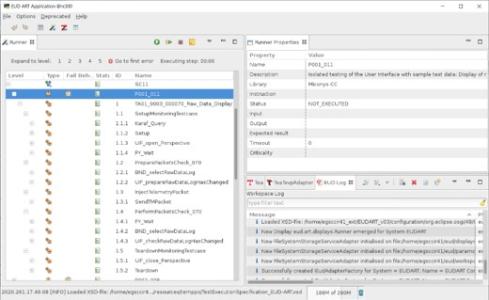New ground segment test automation tools, processes and techniques
Programme
GSTP
Programme Reference
G617-232GI
Prime Contractor
ATOS CONVERGENCE CREATORS GMBH
Start Date
End Date
Status
Closed
Country
Austria

Objectives
The main objective is to address a number of aspects in the automation of Ground Segment testing that are not yet covered by current tools, processes and techniques.
Description
Test automation is now integrated within the life cycle activities for a number of Ground Segment products. The current approach for automated testing relies on two main strategies:
- Use exposed interfaces to drive the system under test. The most commonly used interfaces are APIs and the CORBA interfaces to the visualization layer.
- Use the user interface (GUI) to drive the system under test
The first strategy was used in the early test automation activities, at a time when direct interaction with the GUI was almost unthinkable. The second strategy was developed later and was possible thanks to the use of Java in the visualization layer. Most test automation is now based on direct interaction with the GUI.
While large generic infrastructure applications now benefit (or will benefit soon) from the use of automated testing strategies, one of the biggest challenges still faced in test automation is the development of tests and test strategies for applications with short life cycles (including mission specific software or mission specific customization). Test automation for this type of software is often discarded from the beginning due its high cost.
A second area that will require analysis is related to the test automation of applications that do not require strong active interaction with the user. This can happen because the application is mainly intended for monitoring (i.e. the user interacts in a passive manner) or because the user interfaces are based on non-standard or obsolete technology (e.g. hardware systems accessed via terminal)
The third area that needs to be explored is related to the reduction of test complexity for end-to-end systems. In this case, the large number of systems involved in the testing, combined with all the different potential configurations and the large number of different scenarios typically leads to an unmanageable number of combinations, that need to be rationalized based on a reduction strategy.
Another important activity is related to white box testing of systems, where the inputs to the test are tweaked in line with the code in order to force unusual combinations and to explore all the potential scenarios. This type of testing can be based on symbolic execution techniques to generate inputs based on the code and is often used for security testing.
Performance and robustness is also an area, where test automation would benefit. All the test automation strategies developed so far are well suited for functional testing, but can do little to deal with performance and robustness testing.
The proposed activity shall consist of two steps. In a first step, the following key areas will be analysed with respect to their criticality and relevance:
- development of tests and test automation strategies for applications with short life cycles
- test automation of applications that do not require strong active interaction with the user
- reduction of test complexity for automating end-to-end system testing
- white box test automation of systems
- automation of performance and robustness testing
In a second step, the most critical and relevant areas shall be then addressed.
Application Domain
Generic Technologies
Technology Domain
9 - Mission Operation and Ground Data Systems
Competence Domain
8-Ground Systems and Mission Operations
Initial TRL
TRL 3
Target TRL
TRL 7
Public Document
Final Presentation
